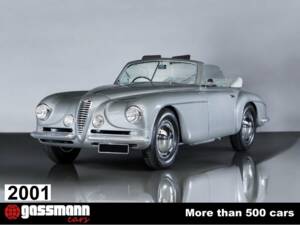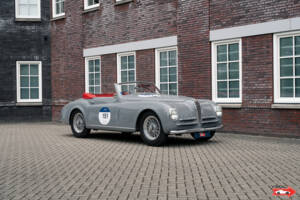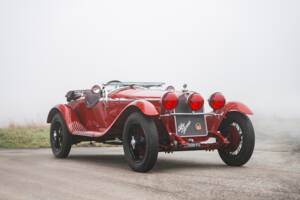- Car
- Alfa Romeo
- Alfa Romeo 6C (28 offers)
Alfa Romeo 6C Classic Cars for Sale
Alfa Romeo's 6C series stands as a milestone in automotive innovation and motorsport triumphs from 1927 to 1954. Defined by advanced straight-six engines, bespoke coachbuilding, and a parade of racing victories, each 6C tells a vivid story of Italian engineering and design. Discover unique variants, rare special editions, and technical highlights that earned the 6C its exceptional status among enthusiasts.
Search results
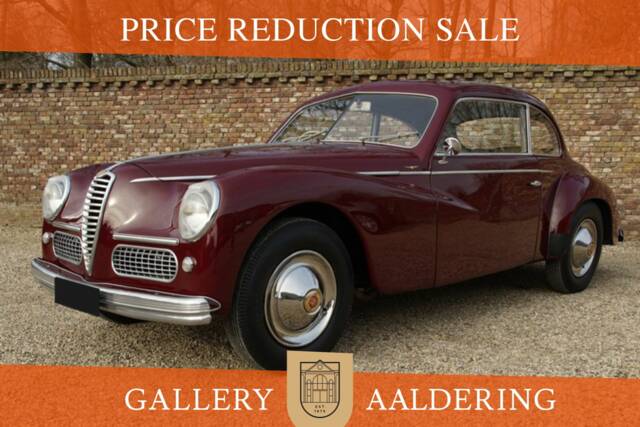
1953 | Alfa Romeo 6C 2500 Super Sport
Alfa Romeo 6C 2500 Sport Berlina GT PRICE REDUCTION! Painstakingly maintained by an Swiss connoisseur, One of the very last 6C 2500 from 'the production line', Original SS engine with three single-choke Weber carburettors , Matching numbers example in de color 'Rosso Scuro', Supplied with the Alfa Romeo Certificato d'Origine

1950 | Alfa Romeo 6C 2500 Villa d`Este
6C 2500 SS Villa d`Este - mehrfach verfügbar!

1948 | Alfa Romeo 6C 2500 Super Sport
Pininfarina Excellent condition! Superb & rare short chassis Pininfarina convertible
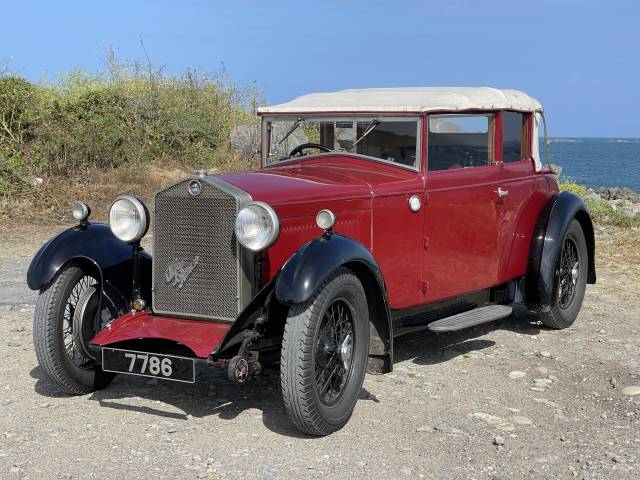
1930 | Alfa Romeo 6C 1750 Turismo
Alfa Romeo 6C 1750 Turismo
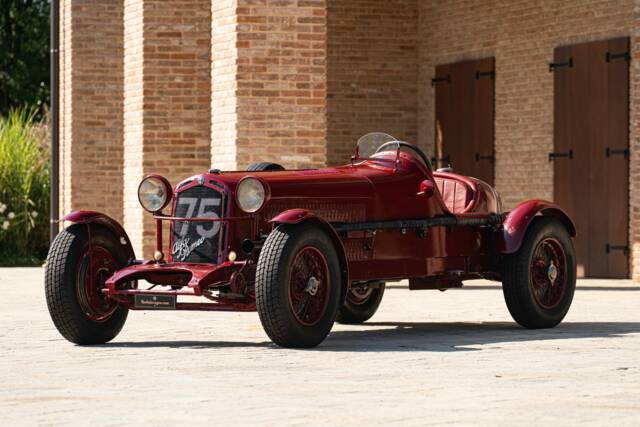
1931 | Alfa Romeo 6C 1750 Gran Sport
2025-09-21 09:13:30 | Alfa Romeo 6C - TRIBUTO SPORT
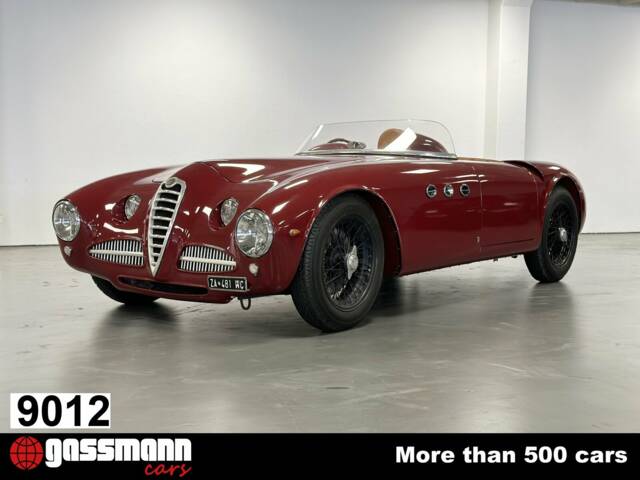
1946 | Alfa Romeo 6C 2500 Super Sport
412 Spider Vignale, 6 Zylinder SS-Motor - RHD
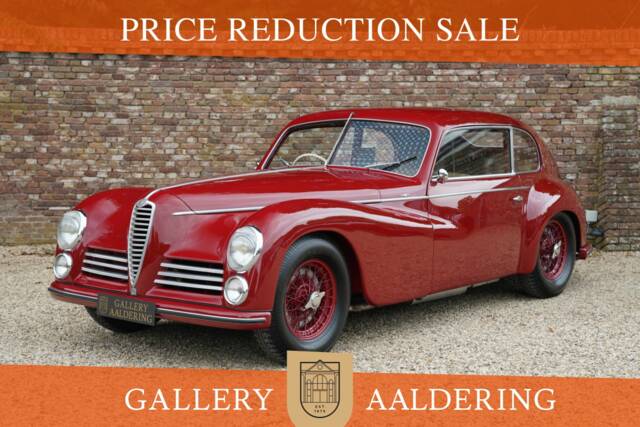
1947 | Alfa Romeo 6C 2500 Freccia d`Oro Sport
Alfa Romeo 6c 2500 Freccia d'Oro PRICE REDUCTION! "Body off" restored preserving the original interior, Notable role in the film “Last Days of Mussolini” - a 1974 Italian historical drama film, Matching numbers & Colors example, A Freccio d'Oro with a quite interesting history, One of 680 manufactured Alfa Romeo's "Golden Arrow",

1931 | Alfa Romeo 6C 1750 Gran Sport
Interesting Mille Miglia racing history connected to the GS engine to be researched further.
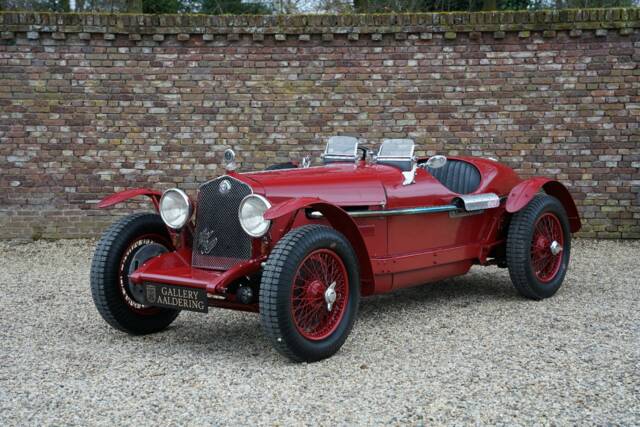
1934 | Alfa Romeo 6C 2300 Pescara
Alfa Romeo 6C 2300 Pescara Documented with an original Alfa Romeo certificate, Long term ownership, Rare 2500 SS Mille Miglia 115 horsepower engine, Original Alfa Romeo chassis and mechanics, A very extensive restoration/rebuild with only original and period Alfa Romeo parts
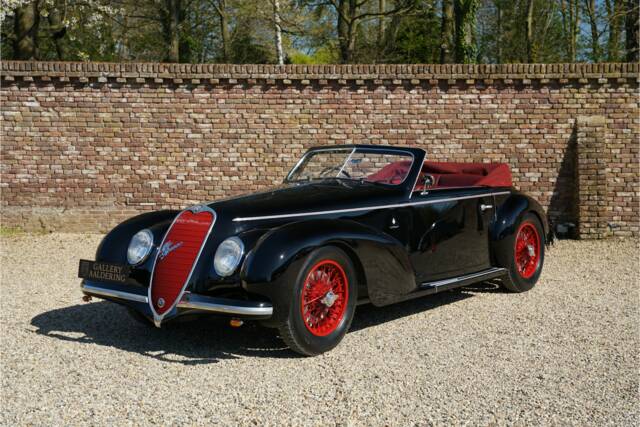
1939 | Alfa Romeo 6C 2500 Sport
Alfa Romeo 6C 2500 Sport Convertible Equipped with an engine block with a remarkable history (Giuseppe Farina of Torino), Desirable and very suitable car for long-distance travel, Inspected/approved and provided with a Fiva Identity Card, Comprehensively restored using only the original and authentic parts, "Design by Touring"
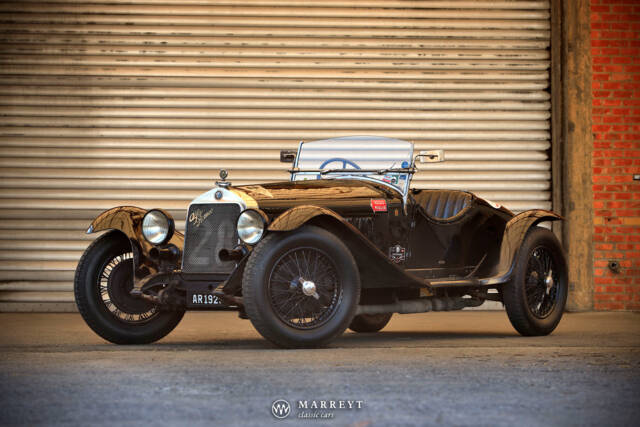
1929 | Alfa Romeo 6C 1750 Super Sport / Gran Sport
"Zagato coachwork"

1948 | Alfa Romeo 6C 2500 Super Sport
A driving piece of art, Mille Miglia Eligible
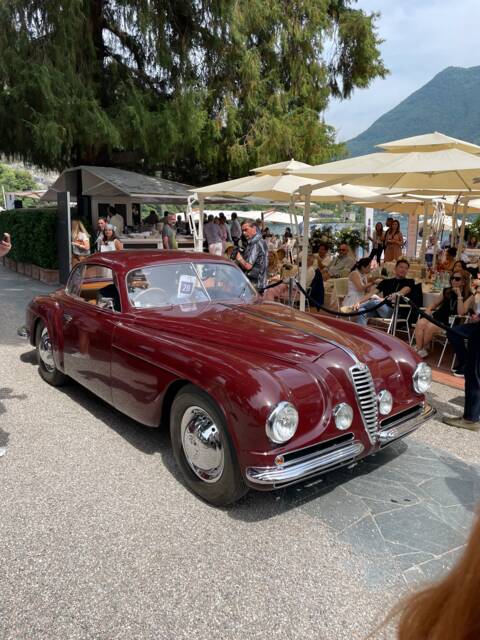
1950 | Alfa Romeo 6C 2500 Super Sport Villa d`Este
The world's most beautiful car of 1949....
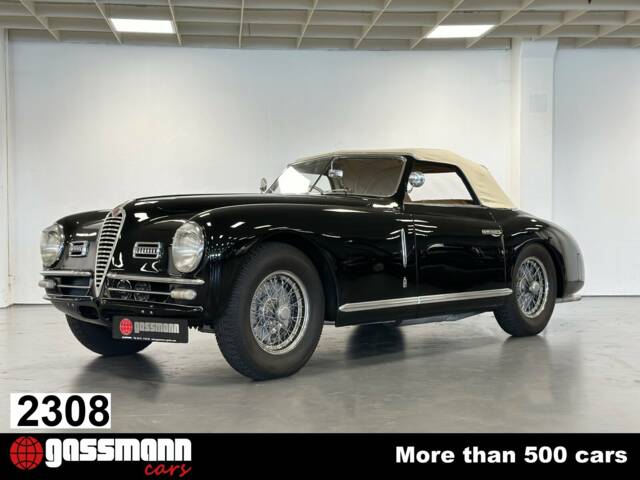
1949 | Alfa Romeo 6C 2500 SS
6C 2500 SS Cabriolet by Pinin Farina, RHD
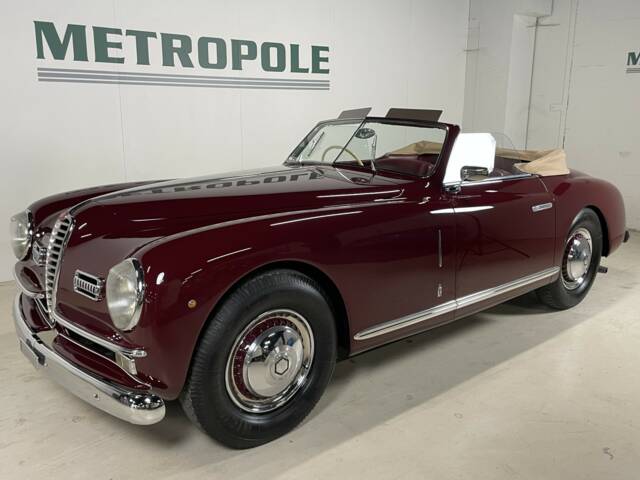
1949 | Alfa Romeo 6C 2500 SS
Alfa Romeo 6C 2500 SS Passo Corto Cabriolet Pinin Farina super sport M1041
History of the Alfa Romeo 6C
The Alfa Romeo 6C was developed in the wake of Alfa’s success with the P2 Grand Prix car, under the visionary guidance of Vittorio Jano. The first production version, the 6C 1500, was introduced in 1927, though the model’s origins reach back to the 1925 Milan Motor Show. The name "6C" refers to its six-cylinder inline engine, a significant advancement in both performance and refinement for its time. These chassis were typically delivered to renowned coachbuilders such as Zagato, Touring Superleggera, Castagna, and Pinin Farina to be clothed in bodies ranging from elegant coupés to pure competition Spiders. From its racing pedigree with wins at the Mille Miglia to becoming a benchmark for luxury Italian motoring, the 6C series intertwined motorsport success, technological progress, and a commitment to exclusivity. Post-WWII, the 6C saw its final iterations before being succeeded by the Alfa Romeo 1900 in the early 1950s.
Model History
The evolution of the 6C series displays Alfa Romeo’s philosophy of technological development and close ties to competition:
- 6C 1500 (1927–1929): The original with a 1.5L SOHC straight-six. Early examples produced around 40–44 hp, with later S and SS versions up to 60 hp, and compressor variants achieving up to 84 hp.
- 6C 1750 (1929–1933): Increased capacity to 1.75L and power outputs up to 102 hp, dominating events such as the Mille Miglia and various Grand Prix races.
- 6C 1900 (1933): Continued development including a boxed frame and aluminum cylinder heads.
- 6C 2300 (1934–1937): Upgrades included the first use of individual front suspension and light alloy heads, producing up to 95 hp. Body styles diversified.
- 6C 2500 (1938–1952): Final and most refined pre-war/early post-war 6C, with a 2.5L engine, power outputs from 90 to 115 hp (in SS variants), and top speeds approaching 165 km/h depending on specification. Buyer's options ranged from Turismo to the shorter-wheelbase, triple-carb SS.
- 6C 3000 (1952–1954): Race-exclusive, with just six units produced, marking the end of the 6C era. Throughout, coach-built bodies were typical, each reflecting period style and owner individuality.
Highlights and Unique Features of the Alfa Romeo 6C
The technical backbone and design philosophy of the 6C series set new benchmarks in pre- and post-war automotive engineering. Hallmarks include the use of DOHC engines from 1928 onwards, advanced suspension systems, and an array of body styles—from cabriolets and berlinettas to Spiders configured for pure performance. Notable innovations were the Superleggera technique by Touring, producing lightweight yet rigid exile metal structures. Interior details often featured luxury materials such as leather and polished wood, intricate instrumentation, and unique accessories like fold-out picnic tables in some coupés. Performance-varied by specification, with motorsport-tuned models achieving top speeds unthinkable for the era. Few series can claim victory across so many endurance events and concours d’elegance shows, underlining the 6C’s synthesis of sport and sophistication.
Technical Data
Special Editions and Collectible Models
The 6C range spawned several collectible specials:
- 6C 2500 SS "Villa d’Este": Limited to around 36 coupés (with a few cabriolets), renowned for its exclusivity and refined coachwork by Touring Superleggera, using the patented Superleggera construction for minimal weight and elegance.
- 6C 2500 "Freccia d’Oro": The first postwar production coupé, with approximately 680 produced, blending luxury with postwar optimism.
- 6C 2300 "Soffio di Satana": A highly innovative, aerodynamic Touring-bodied variant without B-pillars and an advanced alloy engine.
- 6C 2500 Coloniale: Created in 1939 as a military vehicle by government request.
- 6C 3000, the final pure racing iteration, built in extremely limited numbers. Each special edition can often be recognized by distinct body features, chassis numbers, and provenance, making them significant finds for serious collectors.
Weak Spots and Common Issues
Despite the 6C’s fine reputation, potential buyers should take note of classic age-related concerns: body rust (particularly on early steel frames and in sills, arches, and floorpans), tired suspension bushings, and hydraulic brake system leaks in later models. Cars bodied by coachbuilders may show issues specific to unique body constructions, such as corrosion under alloy skins or hidden repairs. Engine-wise, observe for wear on the timing gears, oil leaks, and proper valve adjustments, as DOHC setups can demand periodic expert attention. The complex fuel systems—particularly on models with multiple carburettors—require regular tuning. Replacement parts and authentic foibles (like non-synchronized transmissions on prewar cars) necessitate mechanics familiar with pre-Fiat era Alfa Romeos.
Engine, Performance, Transmission & Handling
Each 6C generation redefined performance benchmarks: Rosso-corsa 6C 1500 SS cars introduced double overhead camshafts and, with available superchargers, rivalled purebred Grand Prix racers of the 1920s. The 6C 1750 cemented Alfa’s dominance in events like the Mille Miglia with a lightweight chassis, responsive steering, and up to 102 hp—impressive for its time. Later 2500 SS models combined triple-carb intake sophistication, hydraulic brakes, and independent front suspension for a composed drive up to 165 km/h. Gear changes were initially non-synchro, progressing to synchronized third and fourth gears on postwar cars. Handling, praised for its accuracy, benefits from original geometry but requires consistent upkeep for top road manners. - 6C 1500 Sport/SS: Sought for period racing events and their historical Mille Miglia success.
- 6C 1750 Gran Sport: Most famous for competitive pedigree and supercharged versions.
- 6C 2500 SS Villa d’Este: Prized for rarity, design, and top-of-the-range features.
Interior, Comfort, Exterior and Design
Design evolved alongside Italian coachbuilding mastery. Early 6Cs bore Art Deco influences with sweeping fenders, long hoods, and vertical grilles, transitioning postwar towards streamlined silhouettes with minimal chrome. Interiors showcased hand-trimmed leather and wood, with high specification options like folding picnic tables, embroidered panels, and comprehensive instrument clusters. Accessories ranged from removable roof panels to elaborate heating, and later models included spacious rear seating without sacrificing sporty proportions. Touring’s "Superleggera" lightweight construction became a signature, most evident on Villa d’Este and select SS models. Chromed wire wheels, distinctive Alfa Romeo grilles, and subtle badging distinguish each coachbuilt creation. Hard-to-find original features—like period radios or custom steering wheels—increase desirability among connoisseurs.
Other Features
Significant provenance enhances many examples, with original certification from institutions (RIAR, FIVA, ASI) adding to value and historical importance. Participation and awards at major concours events such as Villa d’Este or Pebble Beach further elevate specific vehicles. The versatility of chassis delivery ensured that rare, one-off designs continue to turn up globally, many with fascinating stories tied to famous owners or motorsport history. The presence of original documentation, matching numbers, and period accessories is especially prized.
Summary
The Alfa Romeo 6C series continues to fascinate aficionados for its unique blend of technical innovation, motorsport achievements, and Italian design artistry. Each car expresses a singular combination of engineering excellence and individuality, whether as an open-top racer, a glamorous coupé, or a stately sedan. With outstanding representation and search interest in today's market, the 6C remains a reference point for collectors and those aiming to experience a formative era in automotive history.

